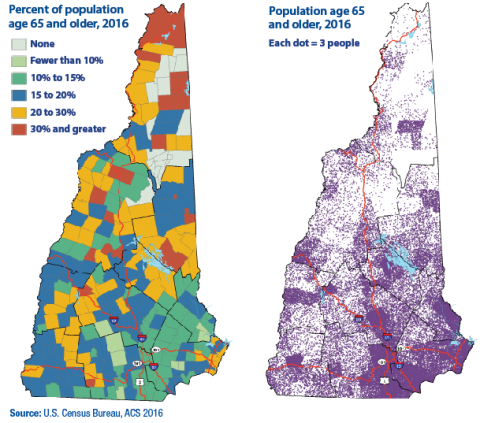download the brief
Key Findings



Only seven states have a larger percentage of older adults than New Hampshire. Delivering health care to New Hampshire’s population during the COVID-19 epidemic is complicated by the uneven spatial distribution of its older population. Older adults are much more likely to experience serious health consequences as a result of exposure to COVID-19, including higher rates of hospitalization and mortality. Thus, access to health care is of critical importance for older adults. Generally, northern New Hampshire communities are smaller and more spread out than those in southern New Hampshire, but they have a higher percentage of older adults. Yet, there are fewer health care providers and hospitals in the sparsely settled north, increasing travel and response times. Older adults are a smaller percentage of the population in southern New Hampshire, but most of the state’s older population resides there. Here health care facilities are more accessible, though they may be overwhelmed by patients needing care. In addition, the larger concentration of young adults and children in densely settled southern communities may make the spread of the disease more likely.

Kenneth M. Johnson is senior demographer at the Carsey School of Public Policy, Class of 1940 professor of sociology at the University of New Hampshire, and an Andrew Carnegie Fellow. His research was supported by the New Hampshire Agricultural Experiment Station in support of Hatch Multi-State Regional Project W-4001 through joint funding of the National Institute of Food and Agriculture, U.S.
